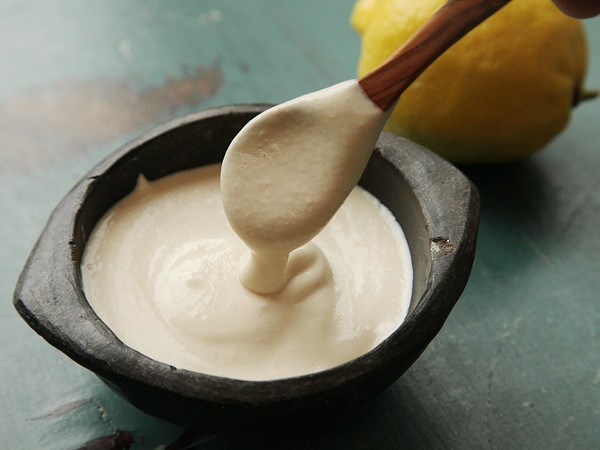Mother sauces get a makeover
August 4, 2016 by Darcie 
If you’ve read any older, classic cookbooks, you are familiar with the mother sauces: béchamel, velouté, espagnole, sauce tomat, and hollandaise. These sauces can seem heavy and bland for modern diners. That’s why chefs like Travis Lett of Los Angeles restaurant Gjelina adapt these classics to make them fit into contemporary cuisine. The NY Times reports on what chefs like Lett consider to be the “new” mother sauces.
Just as the classic sauces provide endless opportunities for riffs and variations – Add shallots, chervil, peppercorn and tarragon to hollandaise to get béarnaise or stir grated Gruyére into béchamel to get Mornay – these new sauces also have ample room for tweaking to suit your tastes.
The five sauces – herb salsa, pepper salsa, yogurt sauce, pesto and tahini – appear “over and over again on menus and in cookbooks that feature the kind of vegetable-heavy, flavor-dense food that cooks and eaters favor today,” according to the article. Master these sauces and you’ll have the basis for dozens of variations to liven up your cooking.
Photo of Tahini sauce with garlic and lemon from Serious Eats by and
Categories
- All Posts (6940)
- Antipasto (2135)
- Author Articles (247)
- Book News (935)
- Cookbook Giveaways (983)
- Cookbook Lovers (257)
- Cooking Tips (109)
- Culinary News (299)
- Food Biz People (552)
- Food Online (791)
- Holidays & Celebrations (272)
- New Cookbooks (149)
- Recipes (1500)
- Shelf Life With Susie (231)
- What's New on EYB (133)
Archives
Latest Comments
- Pamsy on What foods do you look forward to the most for each season?
- Pamsy on How cookbooks can help build resilience
- DarcyVaughn on Danube Cookbook Review and Giveaway
- hettar7 on JoyFull – Cookbook Review & Giveaway
- eliza on What foods do you look forward to the most for each season?
- kmwyman on Rooza by Nadiya Hussain – Cookbook Review and Giveaway
- Maryd8822 on The Golden Wok – Cookbook Giveaway
- Dendav on Danube Cookbook Review and Giveaway
- sanfrannative on Rooza by Nadiya Hussain – Cookbook Review and Giveaway
- darty on Danube Cookbook Review and Giveaway